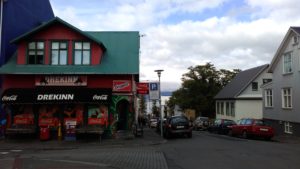Góðan Daginn!
During my time in Iceland, I am living in the country’s capital, Reykjavík, and attending class during the week at the Háskóli Íslands (University of Iceland). As mentioned in last week’s blog, Reykjavík is often translated as “Bay of Smoke,” though some Icelanders prefer the translation “Bay of Steam” because the city was named long ago for the steamy vapor which spread from nearby hot springs (fun fact: the verb reykja means “to smoke” in modern Icelandic). About two thirds of Iceland’s population of around 340,000 live in the city’s greater metropolitan area. However, a steady influx of tourists (over 2 million a year!) makes the city and its environs a hustling and bustling place. New construction projects seem to be cropping up everywhere! The Icelanders tell me these are mostly going to be new hotels. However, other kinds of new businesses are also coming into the area; Iceland’s first Costco just opened in May and has been immensely popular.
The city has an artistic flair, with intricate paintings decorating several of the buildings downtown. Many of these buildings house tourist shops which sell traditional Icelandic wool sweaters, puffin stuffed animals, and viking- themed paraphernalia.

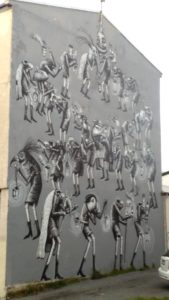
The architecture in the city alternates between the quaint, traditional Scandinavian brightly-painted houses and the structures of modern minimalism. In the picture below, you can see how a ultra-modern building has incorporated the more organic-looking Viking interlace pattern into its wood door. The top scene depicts Ingólfr Arnarson (the first settler of the city) retrieving his high-seat pillars on the shore; around 874 he had cast his high-seat pillars (objects of great symbolic significance) from his boat and determined that he would settle wherever they landed on the shore.
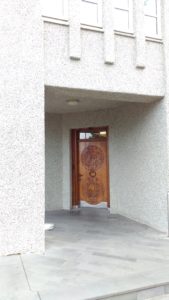
One of the most important recent construction projects in Reykjavík was the completion of Harpa in 2011. Harpa is a concert hall designed to evoke Iceland’s landscape visually and to be energy efficient. Construction began in 2007, but the project became delayed with the financial crisis of 2008. The government decided to finance the completion of the building. Icelanders are extremely proud of this unique and beautiful structure. Its largest hall, Eldborg, seats 1,800 people and is named for one of Iceland’s volcanic craters.
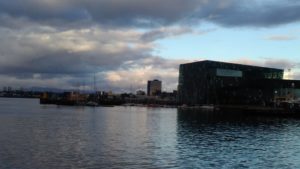
Near Harpa one can find “Grandi” and the traditional fishing district, a waterfront area with lots of food options (as well as whale-watching tour boats nearby, of course).
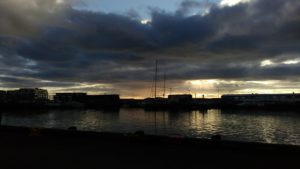
Though it is Iceland’s largest urban center, Reykjavík enjoys its own spectacular views-not only of its bay and the North Atlantic- but also of the mountains close by.
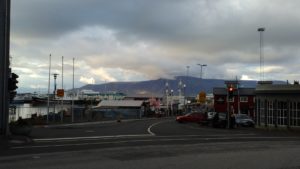
If you are not such an enthusiastic fish eater, there are pylsa (hot dog) stands all over the city. I think they are best with onions (fried or raw) and an Icelandic mayonnaise-based sauce. Yum!
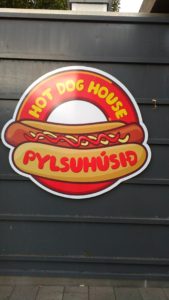
One of Reykjavík’s most striking structures is Hallgrímskirkja (Hallgrim’s Church), and many tourists ascend the tower to look down on the city and see the surrounding nature. For reasons unclear to me, there is a statue of Leif Erikson (considered the first European to discover North America) right in front of the Church. This statue was a gift from the United States to Iceland in 1930, commemorating the 1000 year anniversary of Iceland’s governing body, the Alþingi.
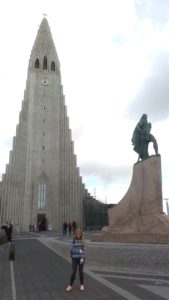
After a hard day’s work, who wouldn’t want to grab a bite at Drekinn (“The Dragon”)?
